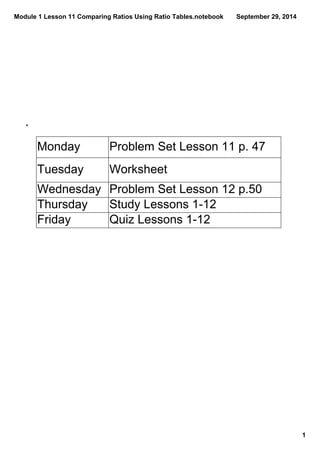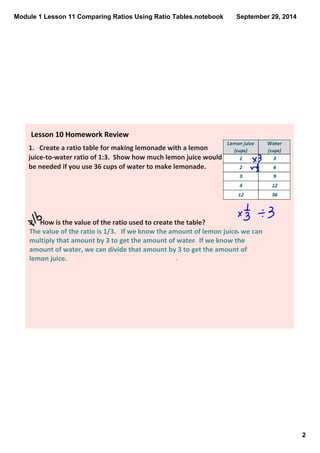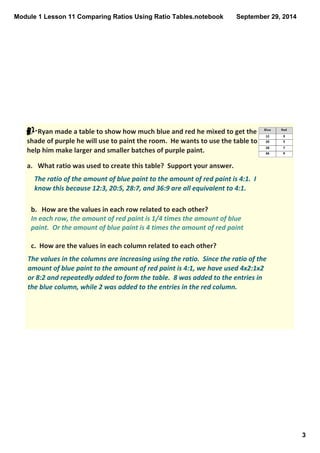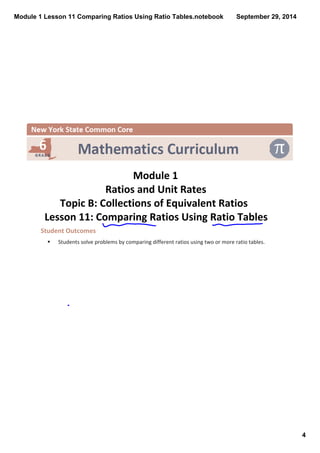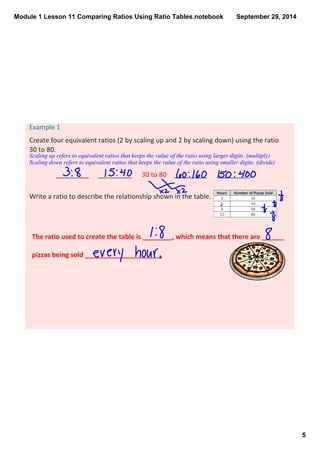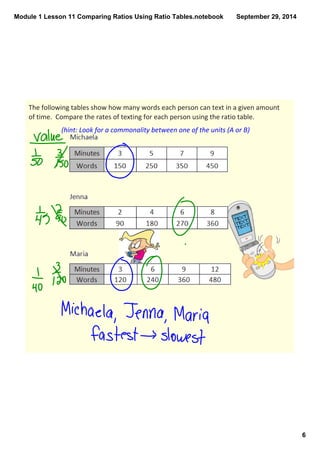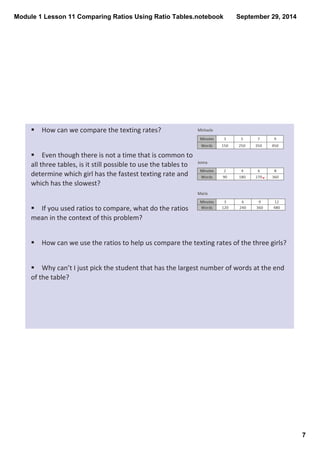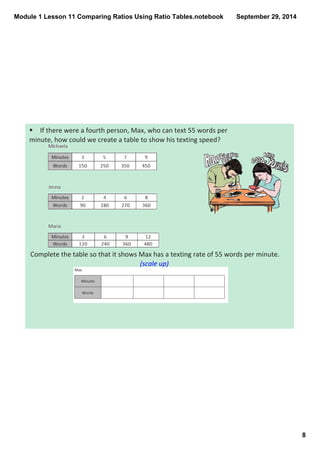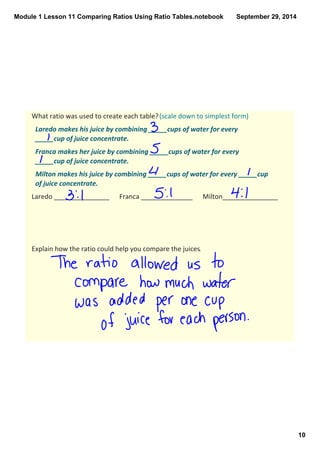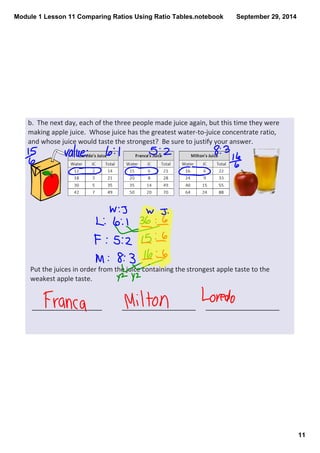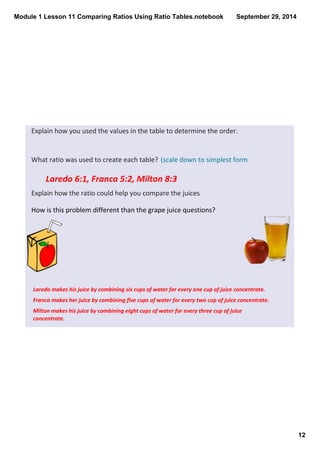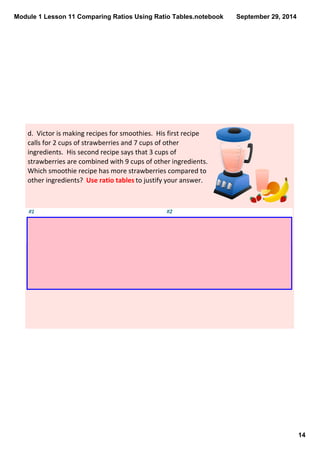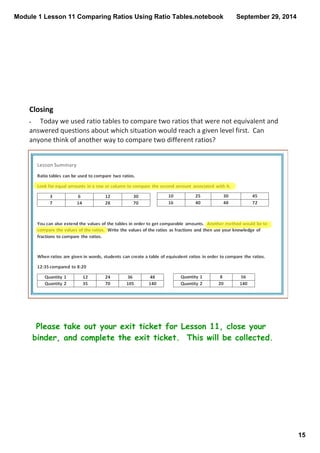This document contains notes from a mathematics lesson on comparing ratios using ratio tables. It includes examples of creating ratio tables with different units and using the tables to determine which ratio represents a larger amount. Students practiced comparing ratios for situations like texting speed, juice mixing, and smoothie recipes. The document demonstrates how to set up, read, and analyze ratio tables to determine the relationship between quantities and compare two different ratios.
